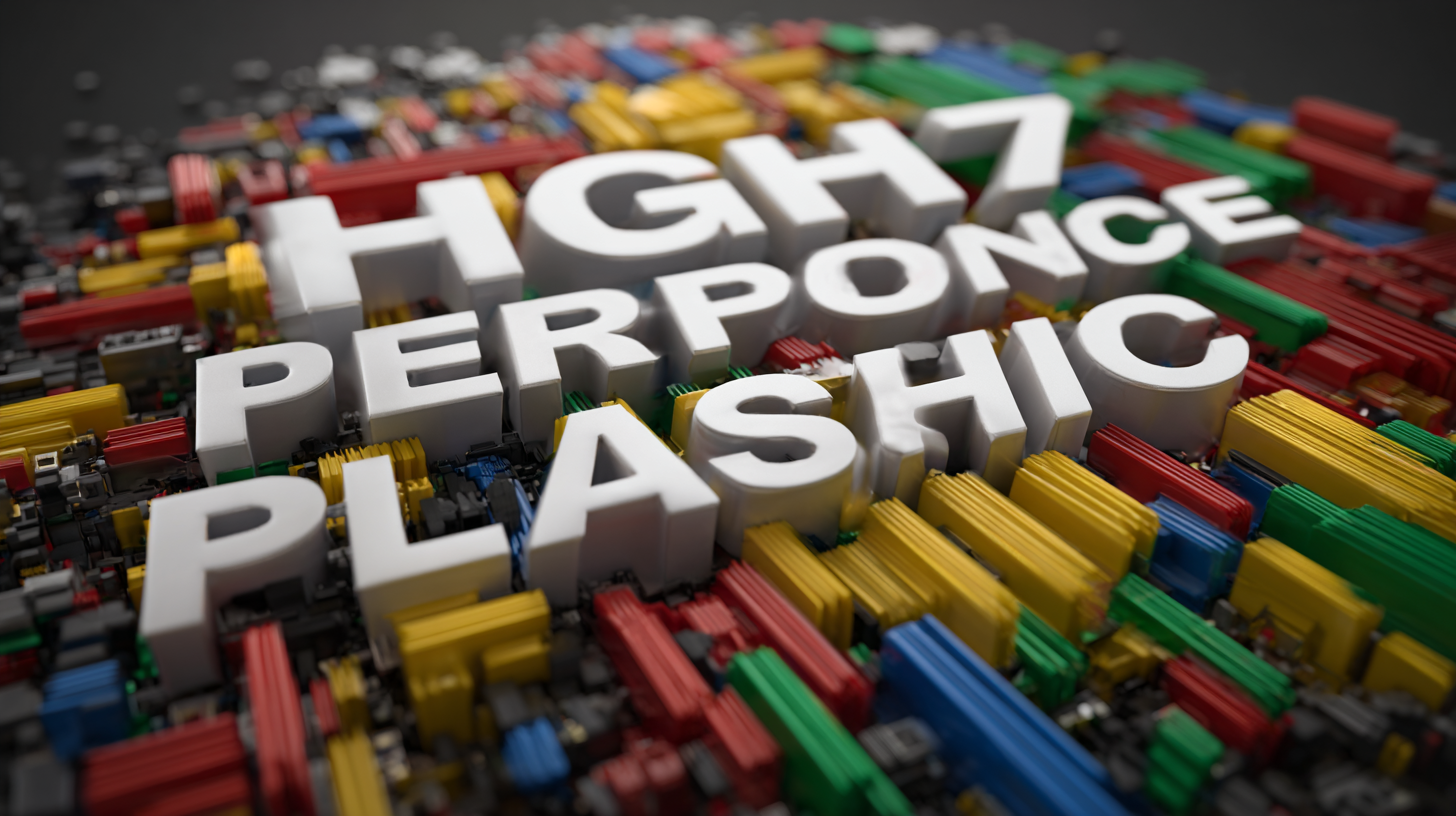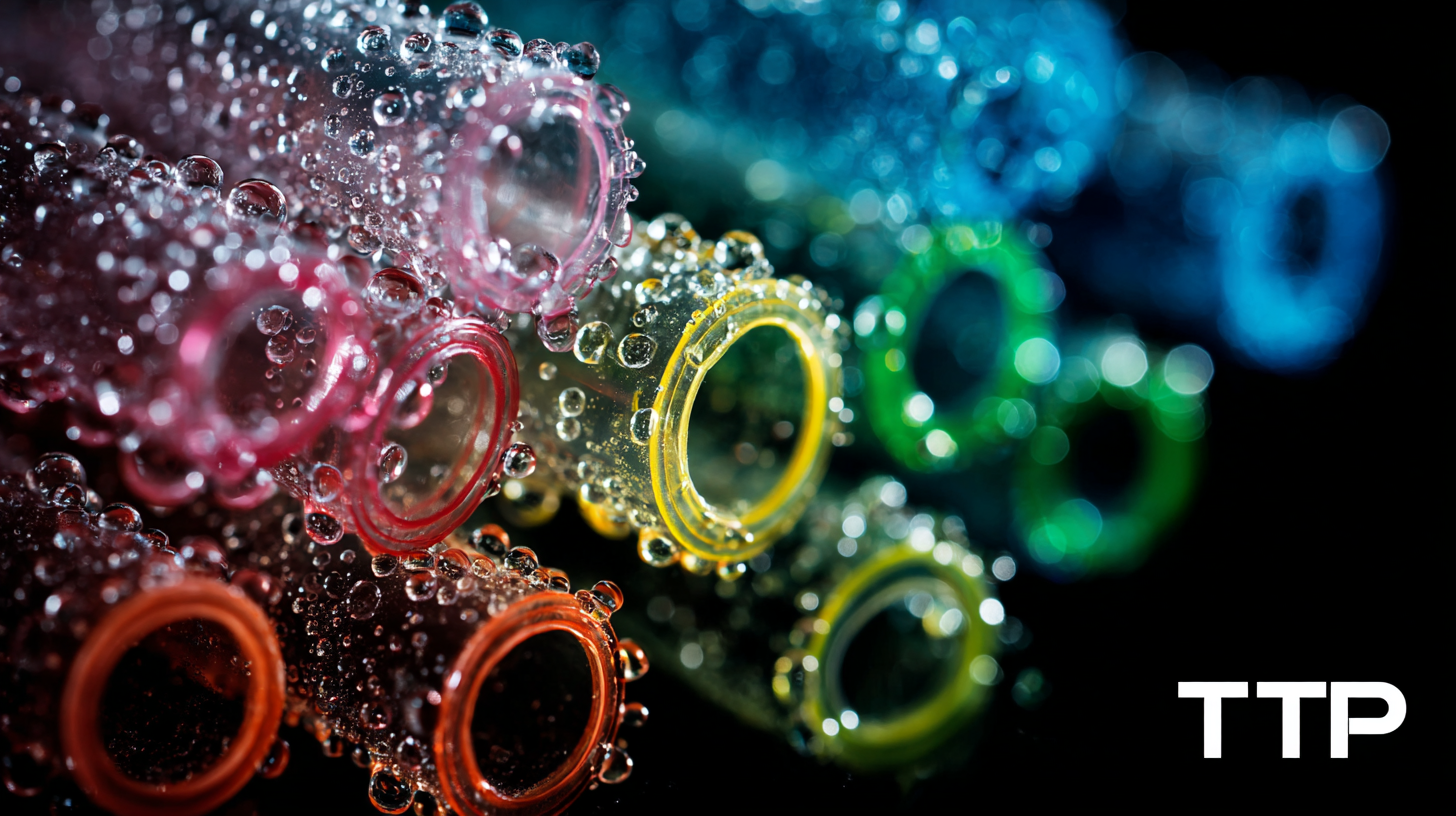Liquid Molding Monthly
7 Essential Tips for Choosing the Best High Performance Plastic in Your Projects
In today's rapidly evolving industrial landscape, the selection of materials plays a crucial role in the success of projects, particularly when it comes to high-performance applications. High Performance Plastic has emerged as a viable alternative to metals and traditional plastics, offering enhanced mechanical properties, thermal stability, and resistance to chemicals and environmental stressors. According to a recent report by the MarketsandMarkets research firm, the global high-performance plastic market is projected to reach USD 36.19 billion by 2025, growing at a compound annual growth rate (CAGR) of 7.2%. This surge emphasizes the growing reliance on these advanced materials across various sectors, including aerospace, automotive, and electronics. As engineers and manufacturers seek to optimize performance while cutting costs, understanding how to select the best high-performance plastics becomes imperative. In this blog, we will provide a checklist of essential tips to guide you through the selection process, ensuring your projects achieve their desired outcomes.

Key Considerations for Selecting High Performance Plastics in 2025 Tech Trends
When selecting high-performance plastics for your projects in 2025, it's essential to consider the evolving tech trends and market demands. With the polymer materials industry leaning towards higher performance, multifunctionality, and smart applications, understanding the specific properties required for your application is crucial. Materials like PFA plastics are witnessing increased demand due to their remarkable thermal stability and chemical resistance. This makes them ideal for high-performance uses in various industries.
Another key consideration is market growth trends. The global market for thermoplastic elastomers is projected to rise significantly from 2025 to 2033, indicating a robust demand for versatile materials that can cater to new technological advancements. It's important to assess the projected growth and stability of the plastic type you're considering, as this will not only affect your project's sustainability but also its overall cost effectiveness. Always look for materials that meet both current and future project requirements while aligning with market trends.
To help you navigate these challenges, here are some essential tips: First, evaluate the mechanical properties and thermal resistance of the plastic to ensure it meets your specifications. Second, consider supply chain stability and availability, especially for materials that are gaining popularity in emerging technologies. Lastly, think about the long-term performance and recyclability of the materials to support sustainability in your projects.

Impact of Advanced Materials on Industry 4.0 and Their Role in High Performance Plastics
 As industries embrace the transformative potential of Industry 4.0, the evolution of high performance plastics becomes increasingly significant. Advanced materials are at the forefront of this shift, enabling improved sustainability and efficiency in manufacturing processes. For instance, innovations in fiber-reinforced polymer composites have not only elevated performance through enhanced strength-to-weight ratios but also positioned these materials as leaders in sustainable practices. With an emphasis on circular economy principles, upcycling waste polymers into new, high-performance materials exemplifies how technology can drive environmental responsibility within industrial applications.
As industries embrace the transformative potential of Industry 4.0, the evolution of high performance plastics becomes increasingly significant. Advanced materials are at the forefront of this shift, enabling improved sustainability and efficiency in manufacturing processes. For instance, innovations in fiber-reinforced polymer composites have not only elevated performance through enhanced strength-to-weight ratios but also positioned these materials as leaders in sustainable practices. With an emphasis on circular economy principles, upcycling waste polymers into new, high-performance materials exemplifies how technology can drive environmental responsibility within industrial applications.
Technological innovations such as machine learning and additive manufacturing are revolutionizing the development of construction materials, allowing for more precise and efficient production methods. These cutting-edge approaches allow engineers and manufacturers to tailor materials for specific applications, enhancing their properties and overall performance. As companies around the world invest in these advanced technologies, the role of high performance plastics is set to expand, offering solutions that meet the demands of modern industries while supporting sustainable growth initiatives.
Sustainability in High Performance Plastics: Recycling and Environmental Impact Statistics
Sustainability has become a pivotal factor in the selection of high-performance plastics, as industries seek to minimize their environmental impact. According to the 2021 Plastics Recycling Industry Study by the American Chemistry Council, about 27% of plastic products were recycled in the United States, highlighting both the progress and challenges facing sustainable practices. As manufacturers increasingly adopt closed-loop systems, the demand for high-performance plastics that are easily recyclable or derived from bio-based sources has surged. This shift not only conserves resources but also reduces greenhouse gas emissions associated with traditional plastic production.
Environmental impact statistics reveal that plastics, including high-performance types, can contribute significantly to pollution if not disposed of properly. The European Plastics Industry Federation reported that approximately 4.8 to 12.7 million tons of plastic waste enter oceans each year, threatening marine life. By choosing high-performance plastics designed for recyclability or utilizing materials with lower environmental footprints, companies can help tackle these pressing global issues, paving the way for a more sustainable future in material usage.
Environmental Impact of High Performance Plastics
Innovations in High Performance Plastics: Market Growth and Future Projections through 2025
The high performance plastics market is on the brink of transformation, with projections indicating substantial growth through 2025 and beyond. The segment dedicated to 3D printing high-performance plastics is expected to surge from USD 0.18 billion in 2025 to USD 0.45 billion by 2030, showcasing a compelling CAGR of 20.4%. This remarkable expansion reflects not only increasing industrial adoption but also a shift toward innovative materials that enhance performance while maintaining sustainability.
As the industry evolves, various sectors, including marine technology and tourism, are leveraging these advanced materials to propel their offerings. The rise in recreational water activities and increasing disposable incomes are contributing factors to the personal watercraft market's growth, highlighting the synergy between consumer demand and technological advancement. Looking ahead, by 2030, the entire 3D printing industry is projected to exceed a staggering $40 billion, driven by its integration into traditional manufacturing processes and a commitment to sustainability across the chemical industry. The emphasis on innovation and efficiency will undoubtedly shape the future landscape of high performance plastics.
Comparative Analysis of Mechanical Properties: Thermoplastics vs. Thermosetting Resins for High Performance应用
When selecting high-performance plastics for your projects, understanding the mechanical properties of thermoplastics and thermosetting resins is essential. Thermoplastics, which are characterized by their ability to be reheated and reshaped, demonstrate excellent impact resistance and elasticity, making them ideal for applications requiring flexibility and durability. On the other hand, thermosetting resins, once cured, exhibit superior thermal stability and rigidity, making them suitable for high-temperature applications where structural integrity is critical.
To make an informed choice, consider the specific demands of your project. Tip one: assess the working temperature; if your application involves extreme heat, thermosetting resins may be preferable due to their heat-resistant properties. Tip two: evaluate mechanical stress; if your project requires materials that can withstand significant impact, thermoplastics may be better, given their capacity to absorb shocks without breaking. Finally, Tip three: think about processing methods; if you need fast turnaround times, the ease of fabrication with thermoplastics could be beneficial, while thermosets may require longer curing times but will offer enhanced performance in demanding environments.


100% Mercury Free
All of Hapco's formulations are completely free of Mercury.

50 Year Track Record
Hapco has been in business for over 50 years!
*NOTICE* Hapco will be will be closed on Monday, May 26th, in observance of Memorial Day. |
Privacy Overview
| Cookie | Duration | Description |
|---|---|---|
| cookielawinfo-checkbox-analytics | 11 months | This cookie is set by GDPR Cookie Consent plugin. The cookie is used to store the user consent for the cookies in the category "Analytics". |
| cookielawinfo-checkbox-functional | 11 months | The cookie is set by GDPR cookie consent to record the user consent for the cookies in the category "Functional". |
| cookielawinfo-checkbox-necessary | 11 months | This cookie is set by GDPR Cookie Consent plugin. The cookies is used to store the user consent for the cookies in the category "Necessary". |
| cookielawinfo-checkbox-others | 11 months | This cookie is set by GDPR Cookie Consent plugin. The cookie is used to store the user consent for the cookies in the category "Other. |
| cookielawinfo-checkbox-performance | 11 months | This cookie is set by GDPR Cookie Consent plugin. The cookie is used to store the user consent for the cookies in the category "Performance". |
| viewed_cookie_policy | 11 months | The cookie is set by the GDPR Cookie Consent plugin and is used to store whether or not user has consented to the use of cookies. It does not store any personal data. |


